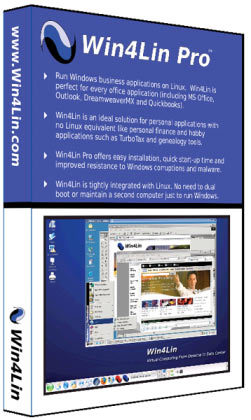Run Windows On Linux: Win4Lin Revisited
API Emulation
For example, the TransGaming Technology product Cedega enables Linux users to enjoy popular game titles designed exclusively for the Windows operating system. How is this possible? By linking Windows-centric application programming interfaces (APIs, the function libraries that serve as building blocks for entire software suites) like Direct3D, DirectInput, and DirectSound to near-match replacements on the Linux platform such as OpenGL, the X11 GUI framework, and the Open Sound System (OSS) and Advanced Linux Sound Architecture (ALSA) libraries.
Unlike an abstraction layer that simply emulates the Win32 API, a full-fledged emulation environment such as Win4Lin represents separate OS functionality in a guest environment that's created entirely using host OS resources. Instead of presenting a bare-minimum approach to cross-platform functionality, VMware products provide a much broader range of capability. Under an emulation viewfinder, a guest OS can be bootstrapped, manipulated, and restarted within the host OS without modifying underlying software components.
Win4Lin Or VMware?
Win4Lin Professional Desktop retail packaging
On the surface, the primary difference between Win4Lin and VMware boils down to this: Win4Lin is a specialized emulation environment designed for ease-of-use, installation, and configuration for the sole purpose of operating Windows within Linux. On the other hand, VMware is constructed with a more general goal: to emulate various OS platforms, often side-by-side, in a scalable and flexible fashion. Accordingly, Win4Lin carries less operational overhead than VMware by sacrificing scalability for simplicity.
Under the hood, both technologies are completely different. Win4Lin is based on the freely available and popular QEMU platform, which employs user mode emulation to run cross-platform binaries and system mode for total hardware emulation. VMware uses its own custom emulation framework and employs proprietary techniques to achieve the same goal: provide a subset of operating system functionality within a greater resource context. Where VMware generalizes, Win4Lin (assisted by QEMU) specializes.
Get Tom's Hardware's best news and in-depth reviews, straight to your inbox.
Ed Tittel is a long-time IT writer, researcher and consultant, and occasional contributor to Tom’s Hardware. A Windows Insider MVP since 2018, he likes to cover OS-related driver, troubleshooting, and security topics.

